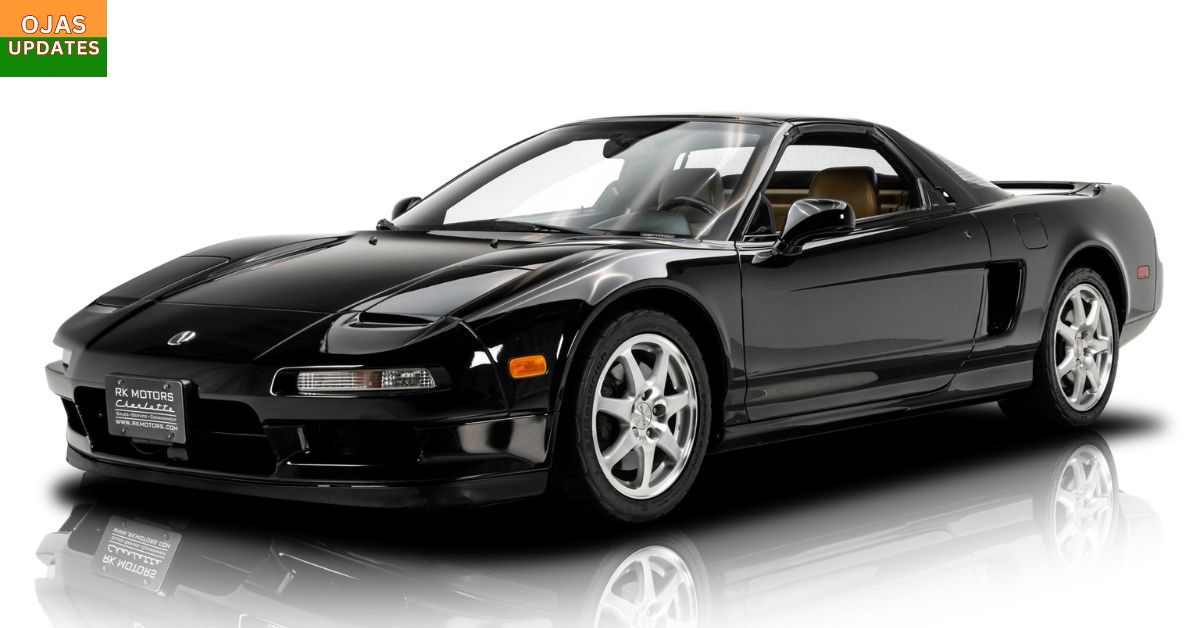When the Acura NSX first hit the streets in 1990, it was a revelation. A mid-engine Japanese supercar with the reliability of a Honda and the finesse of a Ferrari? Unheard of. But by 1995, Acura took things a step further with the NSX-T — the “T” standing for Targa, a removable roof panel that added open-air driving to the NSX’s already intoxicating formula. The NSX-T wasn’t just a stylistic tweak; it was a statement of versatility, refinement, and enduring performance.
🏎️ A Supercar with a Soul
The NSX-T retained the core DNA of the original NSX: a lightweight aluminum body, mid-mounted V6 engine, and razor-sharp handling. But it added a new dimension — literally. The removable roof panel allowed drivers to experience the thrill of open-top motoring without sacrificing the structural integrity and performance that made the NSX legendary.
To compensate for the reduced rigidity caused by the Targa design, Acura engineers reinforced the chassis. While this added a bit of weight, it didn’t dull the car’s reflexes. The NSX-T still danced through corners with the precision of a scalpel, and its naturally aspirated V6 sang a high-revving symphony that echoed through the open cabin.
🔧 Engineering Excellence
The NSX-T came equipped with a 3.2-liter DOHC V6 engine producing 290 horsepower, paired with a close-ratio 6-speed manual transmission. Acura’s VTEC system — Variable Valve Timing and Lift Electronic Control — ensured a broad powerband and thrilling top-end performance. The engine was mounted transversely behind the driver, contributing to the car’s near-perfect weight distribution and sublime handling balance.
Every detail of the NSX-T was engineered for performance. From the aluminum double-wishbone suspension to the vented disc brakes with ABS, the car was a masterclass in precision. Even the steering system was upgraded to an electric power-assisted rack-and-pinion setup, offering tactile feedback and effortless control.
🎨 Design That Endures
Visually, the NSX-T was a stunner. Its low-slung profile, wide stance, and aerodynamic lines gave it a timeless appeal. The 2004 model, for instance, featured fixed xenon headlights, wider tires, and a revised suspension setup that lowered the drag coefficient. The Berlina Black exterior paired with Onyx leather interior created a sophisticated yet aggressive look that still turns heads today.
Inside, the NSX-T was surprisingly luxurious for a supercar. Power-adjustable leather sport seats, a Bose sound system, automatic climate control, and even a cassette stereo (hello, ’90s!) made it a comfortable place to spend time. The cockpit was inspired by fighter jets — driver-focused, ergonomic, and built with high-quality materials that have aged gracefully.
💰 A Collector’s Dream
Fast forward to today, and the NSX-T has become a sought-after classic. A pristine 2004 NSX-T recently sold for $168,000, up from $153,000 just months earlier. That’s not just inflation — it’s appreciation. Enthusiasts and collectors recognize the NSX-T as a pivotal moment in automotive history: a car that blended Japanese reliability with Italian flair, and did so with elegance and restraint.
Its value isn’t just monetary. The NSX-T represents a philosophy that’s increasingly rare in modern supercars — simplicity, purity, and driver engagement. No turbochargers, no hybrid systems, no digital trickery. Just a naturally aspirated engine, a manual gearbox, and a chassis tuned for joy.
🌟 Legacy and Influence
The NSX-T’s influence extends far beyond its own lineage. It forced European manufacturers to rethink their approach to reliability and ergonomics. It proved that supercars didn’t have to be temperamental divas. Even legendary Formula One driver Ayrton Senna had a hand in fine-tuning the original NSX’s suspension — a testament to the car’s racing pedigree.
While Acura has since moved toward hybrid and electric platforms, the NSX-T remains a beacon of analog excellence. It’s a reminder of what happens when engineers are given free rein to build a car that’s not just fast, but soulful.
🚀 Final Thoughts
The Acura NSX-T is more than a car — it’s a time capsule. It captures an era when performance was about connection, not computation. When driving meant feeling every vibration, hearing every rev, and savoring every shift. Whether you’re lucky enough to own one or simply admire it from afar, the NSX-T deserves its place among the greats.

